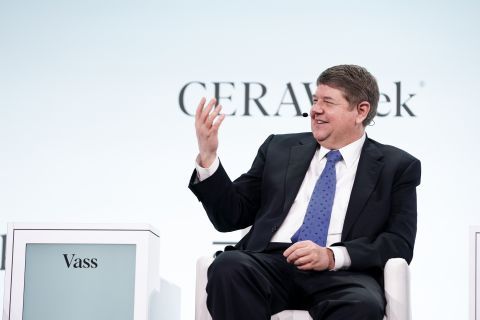Just as there are many moving parts to obtain growth in the exploration, production and transportation of energy, there are a variety of ways to invest in the industry. Exchange-traded funds, direct investment, master limited partnerships, real estate investment trusts, private equity and more can be used to leverage the advantages of federal, state and utility income incentives.
All investments have certain risks, but with prudent management, risks can be reduced. The best risk-adjusted return on investment can be achieved by working with firms that know the industry from the ground up and have sufficient knowledge of and relationships with the best management teams in the business, according to one capital provider.
The Energy & Minerals Group (EMG), based in Houston, is a private investment firm with a family of funds invested across the natural resource sector, including traditional energy inputs and industrial consumable minerals and metals. The firm makes direct investments with equity growth capital and deploys an asset-development strategy to get the best risk-adjusted return for its clients.

“Not long ago, a lot of people were still holding onto the dream of $7 to $8 per thousand cubic feet of gas. Over time, that dream has faded.” John Raymond, founder and chief executive of The Energy & Minerals Group
Big investments
EMG typically makes equity investments of $150- to $400 million per project. John T. Raymond, founder and chief executive, defines the midstream segment of the energy business as companies that own infrastructure such as gathering lines, processing facilities, fractionation, pipelines and terminals.
"They generally include anything that transports product from the point of extraction to the point of consumption," he says. The firm has about $2.7 billion under management and expects that number to grow considerably over time. "We are very active in the midstream business and have the desire to do a lot more."
Raymond expects to invest another $500 million this year in the midstream segment, according to current plans, but that could grow through the course of the year. Through 2012, the amount committed depends on the quality of the opportunities, he says.
"If the opportunities are there, we could commit $1- to $2 billion this year. The midstream part of our business model was built five years ago on the view that the shift to unconventional resources would manifest the need to reconfigure, and, in many cases, build greenfield infrastructure to deliver the product from the previously undrilled, unconventional plays to the market. We made the deliberate decision that we wanted to partner both with producer customers and industry participants to develop the complete value chain of assets that producer customers would need for decades to come."
Raymond grew up in the energy industry as the son of now retired ExxonMobil Corp. chairman and chief executive Lee R. Raymond. He sees unconventional oil and gas plays, including shales and tight sands, as the game changer during the past five years, and believes this phenomenon will continue in the foreseeable future.
"We have to keep in mind that the energy business and everything that goes into making it work represents the world's biggest businesses. Things just don't happen overnight. It takes a lot of planning, capital and time and that is what we are witnessing. The development of unconventional resources is being driven by evolving technologies in the form of horizontal drilling and hydraulic fracturing. These are technologies that have evolved over the past decade. Engineers armed with enough time and money can do amazing things; those advancements will most certainly continue as we move into the future."
For example, much of the drilling activity has shifted to liquids-rich plays in the Marcellus, Bakken and Eagle Ford shales during the past 12 to 18 months, which has manifested the additional need for liquids-based infrastructure to get the product to market, he explains. Throughout 2012, the industry will see substantial investment in NGL infrastructure.
"How much investment is needed in any one company?" he asks. "It could be as small as $50 million or as large as several billion dollars. In several cases, EMG will invest in excess of $1 billion on a project."
System-building
Raymond sees a "distinct difference" between building an asset and building a system. "We have a preference for building a system rather than simply an asset. We are less interested in building a processing plant in the middle of a field for example. We would much rather build a system that includes the processing plant and gathering lines as well as the fractionation plant. However, when you're building a system, you get into very large scale capital needs."
System-building allows more control over the product, he says. "If you just build a processing plant, what are you going to do with the product that comes out of the plant? You are captive to whoever that buyer is going to be. The more of the value chain one owns, the more control one has over one's own destiny."
During the past few years, Raymond has evaluated some 550 deals that represented roughly $150 billion in capital opportunities. Against that backdrop, the firm funded nine initiatives.
"We've seen a high velocity of deal flow. In all those in which we participated, we had a good relationship, in some cases a personal relationship, with the management teams. While EMG is only five years old, we have spent our entire careers in these businesses. We have long-standing relationships with most of the industry players."
In addition to close relationships, the knowledge that comes from industry experience is of paramount importance, he says.
"When you marry the relationships with the knowledge and the large pools of capital, it creates a very powerful dynamic. It's off of this foundation that EMG partners with management teams that have significant industry experience as well."
For example, in 2007, EMG founded INR Energy LLC with a management team to create a start-up focused on coal mining. Both Raymond and John Calvert (co-founder and managing partner of EMG) held two of the four seats on the board of directors. With the oversight of EMG, the company made successful acquisitions. INR Energy was subsequently sold for $778 million and EMG made about 3.5 times their money in two and a half years from that investment.
Raymond says investing in midstream is "a tricky business," as there is a delicate balance between risk and return. Just as the energy business is cyclical, so are the inflows and outflows of capital. On a through-cycle basis, that creates an asymmetric risk-return equation of which management has to be very careful. The key is to have a lot of experience in the business to truly understand the risks.
"In conjunction with that, you have to have a lot of discipline. If not, you will end up competing on risk, and not returns. When you do that, the returns do not necessarily go up proportionally to the incremental risk. How that works out at the back end of the cycle—and there will be a back end of the cycle—is yet to be seen."
The current opportunity in the midstream sector is driven by the supply shift away from the conventional resource into the unconventional resource. "That is kind of the tsunami theory. How do you get your surf board on the wave? How do you participate?"
Most of EMG's investors are not driven as much by interest rates as they are by exposure to real assets, explains Raymond. "They want their portfolios to be more heavily weighted to real assets, such as energy, mining, minerals, real estate, timber, agriculture and that type of a thing."
Meanwhile, he sees a "huge influx of foreign capital" from investors who have large balance sheets and low-cost capital to develop the upstream opportunities in North America. The firm will partner with the upstream ventures to build the midstream infrastructure required by producers to get products to market, as is the case in the Liberty joint venture with MarkWest Hydrocarbons in the liquids-rich area of the Marcellus shale, he says.
Independence and price
Yet, despite growing energy investments, the U.S. will not be energy independent for the foreseeable future, opines Raymond.
"At some point, the legislators in Washington are going to have to be honest with the American people. While green energy sounds great, in reality, green energy won't have much impact on the overall energy equation. Whether the people in Washington truly understand this or are simply not willing to admit it is a point of debate. But in either instance, the end result is the same in the sense that green energy isn't going to produce the solutions that the country needs."
Alternative energy sources, such as wind and solar that are used to generated electricity, are much higher priced than hydrocarbons, such as gas, oil and coal. Also, the power generated from those sources is not easily stored, nor always available on demand. Even in the best scenario of a wind farm, natural gas must be stored nearby as a backstop fuel for power generation.
Raymond asserts that the U.S. will continue to rely on fossil fuels for a long time to come. "With natural gas, we are much more constructive about the long-term future, including the regulatory side of the conversation. Also, the recent nuclear-energy problems in Japan may have moderate beneficial effects on regulations, especially when it comes to using more natural gas."
As a result, Raymond is "somewhat constructive" on the thesis for gas demand. He sees much debate about natural gas price levels and about where prices will go.
"Not long ago, a lot of people were still holding onto the dream of $7 to $8 per thousand cubic feet of gas. Over time, that dream has faded."
Now, gas is going to be a $4 to $6 commodity over at least the next five years, he says, noting that some volatility will be driven by weather and other exogenous factors.
"Generally speaking, we don't think that gas at less than $4 per thousand cubic feet, long-term, makes much sense. However, if you gave the industry $6 gas, you would get all the natural gas you could dream of. There will be some cycling within that range, but I think that is the world we all have to get comfortable living in for the foreseeable future. The good news is, the commodity will be properly priced for demand growth, which is something we haven't seen in this country in almost two decades."
Recommended Reading
CERAWeek: Large Language Models Fuel Industry-wide Productivity
2024-03-21 - AI experts promote the generative advantage of using AI to handle busywork while people focus on innovations.
Cyber-informed Engineering Can Fortify OT Security
2024-03-12 - Ransomware is still a top threat in cybersecurity even as hacktivist attacks trend up, and the oil and gas sector must address both to maintain operational security.
Exclusive: Halliburton’s Frac Automation Roadmap
2024-03-06 - In this Hart Energy Exclusive, Halliburton’s William Ruhle describes the challenges and future of automating frac jobs.
Oil States’ ACTIVEHub for Digitized Assets
2024-03-14 - Oil States Energy Services’ new ACTIVEHub system and ACTIVELatch help operators remotely monitor and automate frac locations for a more efficient and safer wellsite.




